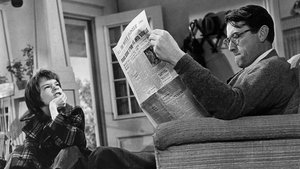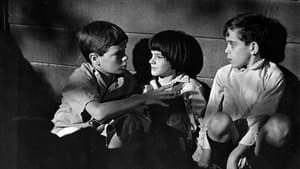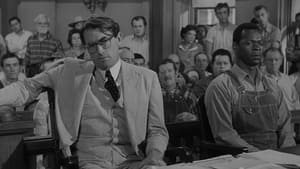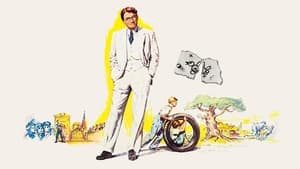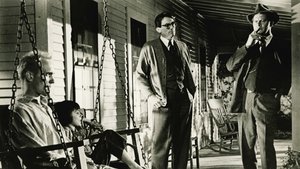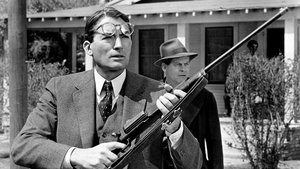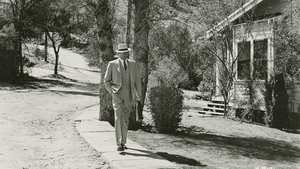Video Sources 0 Views
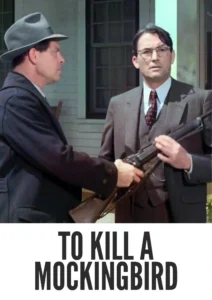
Download To Kill a Mockingbird (1962) Colorized HD | Gregory Peck | Timeless Literary Drama
Synopsis

Step into the poignant world of Harper Lee’s Pulitzer Prize-winning novel with To Kill a Mockingbird, the 1962 cinematic masterpiece, now beautifully colorized for a viewing experience that resonates with modern audiences. Directed by Robert Mulligan and featuring an unforgettable performance by Gregory Peck, this film explores themes of justice, prejudice, and childhood innocence in the Depression-era South. Perfect for those who appreciate thought-provoking stories and powerful performances, this HD download brings a timeless classic to life with renewed vibrancy.
To Kill a Mockingbird unfolds through the eyes of Scout Finch (Mary Badham), a young girl growing up in the sleepy Alabama town of Maycomb. Her father, Atticus Finch (Gregory Peck), is a respected lawyer and a man of unwavering integrity.
When Tom Robinson (Brock Peters), a black man, is falsely accused of assaulting a white woman, Mayella Ewell (Collin Wilcox Paxton), Atticus is appointed to defend him. Despite facing intense prejudice and hostility from the community, Atticus is determined to provide Tom with the best possible defense.
As Atticus fights for justice, Scout and her brother Jem (Phillip Alford) learn valuable lessons about empathy, courage, and the complexities of the adult world. The trial of Tom Robinson exposes the deep-seated racism and social inequalities that plague Maycomb, and the film culminates in a powerful and heartbreaking verdict that leaves a lasting impact. To Kill a Mockingbird is a story about the loss of innocence, the importance of standing up for what is right, and the enduring power of hope in the face of adversity.
The film features a remarkable cast of actors who bring this iconic story to life:
-
Gregory Peck as Atticus Finch
-
Mary Badham as Scout Finch
-
Phillip Alford as Jem Finch
-
Brock Peters as Tom Robinson
-
Robert Duvall as Arthur “Boo” Radley
-
Collin Wilcox Paxton as Mayella Ewell
To Kill a Mockingbird falls into the genre of drama, with elements of legal drama and coming-of-age stories. Its powerful themes and timeless message make it a truly unforgettable film.
Released in 1962, To Kill a Mockingbird coincided with the height of the Civil Rights Movement in the United States. The film’s unflinching portrayal of racial injustice resonated deeply with audiences and sparked important conversations about equality and social change. To Kill a Mockingbird remains a powerful reminder of the ongoing struggle for civil rights and the importance of empathy and understanding in a divided world.
This colorized version of To Kill a Mockingbird has been meticulously restored using state-of-the-art digital techniques, enhancing the visual appeal while preserving the film’s original artistry and emotional depth. The colorization process involved a careful analysis of the grayscale tones in the original black and white footage, with particular attention paid to capturing the nuances of the characters and the atmosphere of the setting. While the specific software used remains proprietary, the methods employed included advanced algorithms for color palette selection, scene enhancement, and image stabilization. This painstaking process brings new life to the characters and settings, making the story even more engaging for modern audiences. While the merits of colorizing classic films are sometimes debated, it can introduce these films to a broader audience and ensure their lasting legacy for future generations.
-
: Robert Mulligan
-
: Horton Foote, Harper Lee (novel)
-
: Russell Harlan
-
: Aaron Stell
-
: Brentwood Productions
-
: Universal Pictures
-
: 129 minutes
-
: MP4
-
: HD (1080p)
-
: Compatible with most devices, including smartphones, tablets, computers, and smart TVs.
To Kill a Mockingbird (1962) is widely regarded as one of the greatest films ever made, praised for its powerful performances, its moving story, and its timeless message. It remains a beloved classic, celebrated for its ability to inspire empathy and understanding in audiences of all ages. As a culturally significant and artistically brilliant film, To Kill a Mockingbird is a must-see for anyone who appreciates the power of cinema to change hearts and minds.
-
: What is To Kill a Mockingbird about?
-
A: To Kill a Mockingbird is a drama about a lawyer in the Depression-era South who defends a black man falsely accused of assaulting a white woman.
-
-
: Is To Kill a Mockingbird (1962) a well-known film?
-
A: Yes, To Kill a Mockingbird is one of the most beloved and critically acclaimed films in cinematic history.
-
-
: Is this version of To Kill a Mockingbird colorized?
-
A: Yes, this version has been professionally colorized to enhance the viewing experience.
-
-
: What makes To Kill a Mockingbird interesting for classic film fans?
-
A: To Kill a Mockingbird offers a powerful story, unforgettable performances, and timeless themes that continue to resonate with audiences today.
-
-
: What is the download format?
-
A: The download format is MP4, which is compatible with most devices.
-
-
: What resolution is the download?
-
A: The resolution is HD (1080p), providing a high-quality viewing experience.
-
Watch To Kill a Mockingbird Today!
